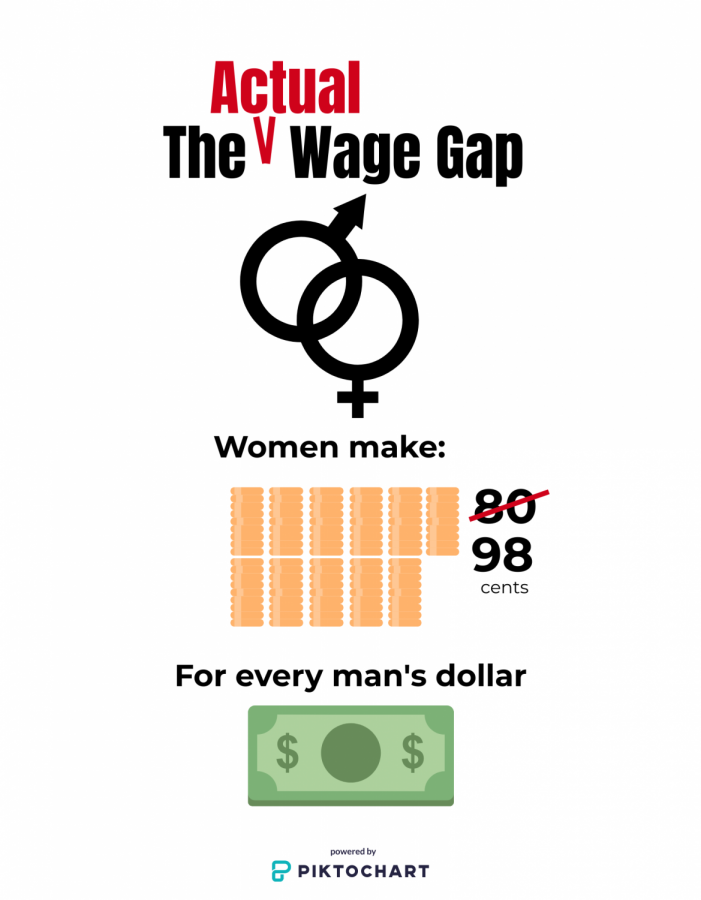Wage gap presented by media is misleading
The wage gap often portrayed by media sources is not in fact totally true, according to Payscale.
“Women earn around 80 cents for every man’s dollar” is something we have all heard. Does it actually mean that women get paid less for the same job as men? Not exactly.
The statistic that women earn 80% of what men make is not found by comparing women and men in the same jobs. Instead, the median women’s salary is compared to that of a man. This does not factor in what jobs each individual has or the hours they work. These details are critical and make a big difference, because the type of job you have makes a big difference in your salary. In fact, according to Payscale, once the job and qualifications were factored in, women made 98 cents to the man’s dollar. That means that on average, men hold higher paying jobs than women, or have better qualifications, otherwise, women would make more than 80% of what men do.
Another factor is the hours that employees worked. Men tend to work longer hours, and on average take fewer sick days. According to the U.S. Department of Labor, men work, on average, 34 minutes longer than women in a day. This can really add up, so the fact that it is not included when calculating the wage gap is detrimental to its accuracy. I’m not saying that there isn’t sexism in the workplace, but because of the biased media, not many know exactly how much.
Well, why do men have higher paying jobs and work longer on average? That should be the focus of the media. Women are usually expected to care for children and their families, leaving them less time to work. Even if women are unmarried, employers will always have the thought that the women might raise a family and have to miss work. That underlying thought often stops them from getting promotions or being hired in the first place. This is discrimination, and it needs to be fixed.
In order to change the system, our focus should shift from the existence of a wage gap to an opportunity gap, because women have fewer opportunities to work for longer and work their way up in the business. Males should be encouraged to help raise their family and be homemakers, as women should be encouraged to work. Each individual should have a choice that’s not influenced by social standards. That’s the real solution.
Your donation will support the student journalists of Harrisonburg High School. Your contribution will allow us to purchase equipment and cover our annual website hosting costs.





